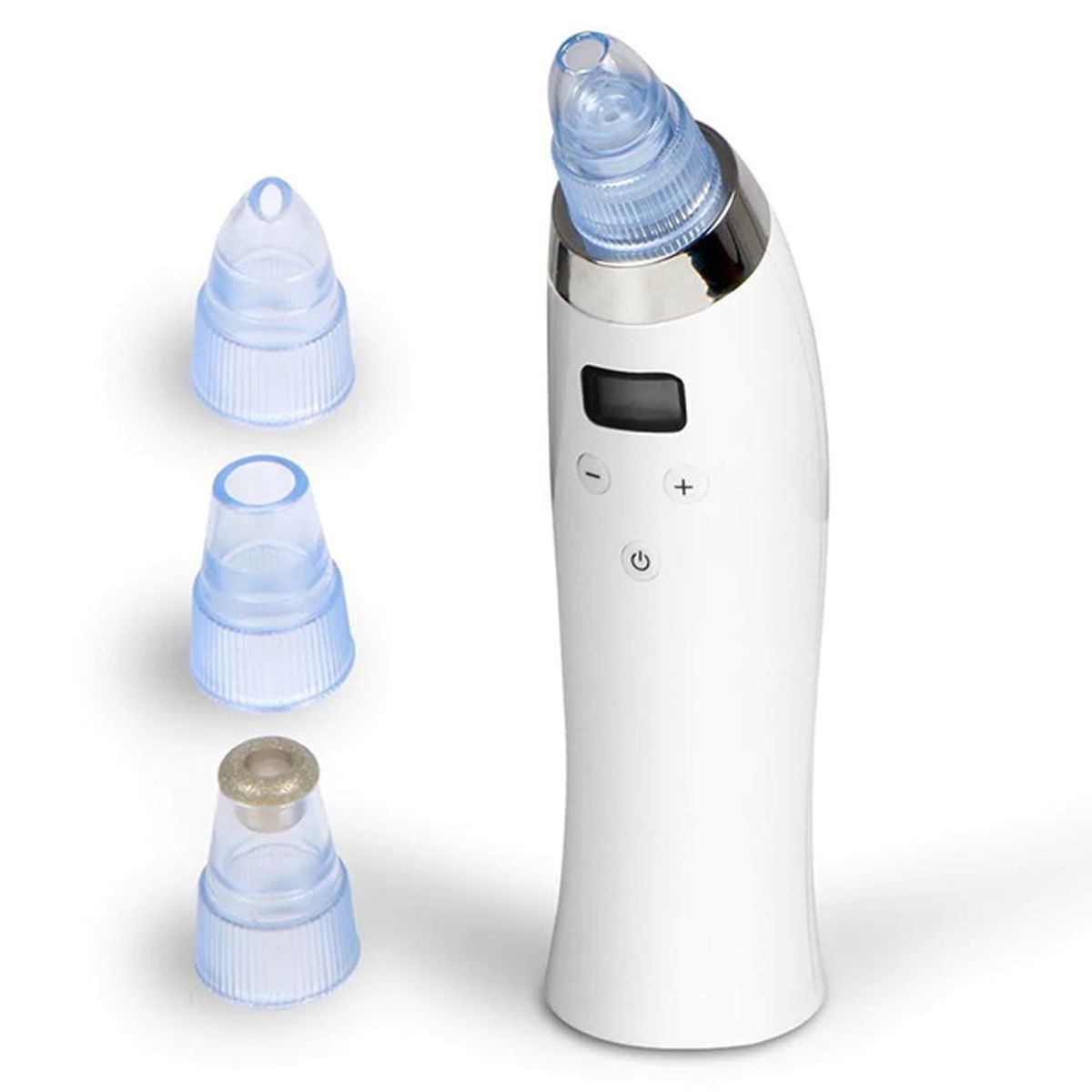The results are delightfully disgusting, but are pore vacuums right for you?
Should You Really Vacuum Your Face?

Half (or let’s admit it, most) of the appeal of using a pore strip is not just the promise of a clearer complexion — it’s the opportunity to see what clogged them in the first place. It’s also why editors and beauty buffs alike have become intrigued by a new device coming out of Korea: Pore vacuums.
The tools are already a fixture in spas and dermatology practices. (As a matter of fact, Sephora shoppers might have already experienced the appeal of the pore vacuum by stopping by the stores to snag a free PERK hydrating facial after purchasing $75 worth of skincare.) And the at-home versions have sparked a surge of curiosity, thanks to a number of YouTubers showing off just how much gunk these vacuums suck out of pores.

They’re essentially handheld microdermabrasion machines that use rotating disks to exfoliate while applying suction to remove the outermost layer of skin cells and opening pores, according to New Jersey-based dermatologist Dr. Adriana Lombardi. Many of the at-home options available, like Beautimate’s Comedo Suction Microdermabrasion Diamond Machine ($99), instruct users to steam their faces a few minutes before use. Dr. Debra Jaliman, board-certified NYC dermatologist and author of the book Skin Rules: Trade Secrets from a Top New York Dermatologist, recommends using a serum with salicylic or glycolic acid to provide some slip for the beauty gadget and keep pores clear through the process.
The treatment is said to reduce the appearance of fine lines and wrinkles since sloughing off dead skin can help your beauty products absorb more easily into the deeper layers of the skin and be more effective overall. But according to Dr. Papri Sarkar, a board-certified dermatologist based in Brookline, MA, the device is most effective on enlarged pores and acne-prone skin. “Most of the time, dullness comes from a larger layer of dead skin cells on the surface of the skin than usual [which] in turn, leads to blackheads. Using a pore vacuum can help to get rid of blackheads and get rid of excess dead skin cells.”
Just don’t expect it to work on inflammatory acne, like papules, pustules, nodules, or cysts. In fact, the appliances can actually make those conditions much worse. Lombardi says it can also cause hyperpigmentation, especially for those with darker skin tones. “In fact, using this on acne that looks ‘juicy’ with inflammation can actually cause scarring,” she said. (Not to mention the risk of infection if you glide the machine over cuts or popped pimples.)
Another cause for concern is the suction settings in the vacuum, as the pressure can easily cause bruising that looks similar to hickies. As a result, sensitive skin types, along with those who have rosacea, should stay away, as the suction on the machine can cause dilated blood vessels, which Lombardi says could lead to telangiectasia (AKA spider veins) that would need laser treatment to correct. The vacuums also tend to pull out more than skin debris, yanking out sebaceous filaments. Often mistaken for blackheads, they’re actually tiny hairs or peach fuzz that help your natural oil reach the surface of your skin and can take months to grow back. Plus, there’s the risk of sucking up too much sebum and leaving your skin parched in the process.
It’s all about finding the right spots. “I think if you can make sure to spend more time in areas that need the suction and less in others which may get too dry, it has the potential to work,” Sarkar says.

Though the experts admit that the tools are not as powerful as the ones you’d spot in spas or dermatologists’ offices, they suggest bringing in your tech to get checked out to ensure it’s safe for your skin. Having a treatment plan in place prior to the first application is also key to avoiding any irritation. Lombardi advises anyone who opts for the skincare appliance to use it as directed, with light pressure and swift strokes. “Use the machine on your arm or hand before applying to your face so you know how to maneuver it and how much suction will be produced,” Sarkar adds, saying that you should start out by using the pore vacuum once a week until you’re sure your skin can take the vacuum’s pressure.
But even if you can’t (or don’t) get your hands on one, it doesn’t mean you’ll miss out on scoring the same beauty benefits. Experts point out that products that contain salicylic acid, glycolic acid, or retinoids can help slough off dead skin, clear out pores, and brighten your visage — all without the risk of any bruising. “[The products] won’t have the same wow factor as using a device, but [they’re] super effective if you design the right regimen for your skin,” Sarkar says.
If you’re interested in procuring a pore vacuum for yourself, it’s a good idea to talk to your dermatologist or a licensed esthetician about your options before you spend the money — especially if you have sensitive skin. It might even be worth trying the treatment in-office, as it’ll allow you to see if your skin can tolerate it. And using a light touch and the right products will help avoid any irritation, so all you’re left with is a clear, glowing complexion.
Follow us on Pinterest to score more of the skincare info you need to know.
Brit + Co may at times use affiliate links to promote products sold by others, but always offers genuine editorial recommendations.
(Photos via Getty)












